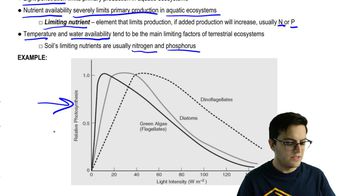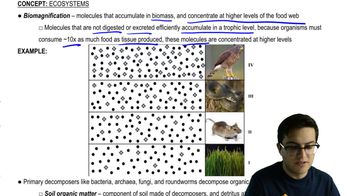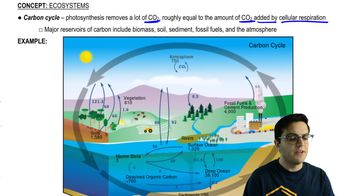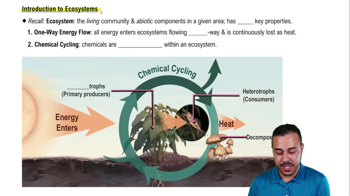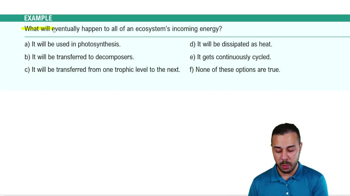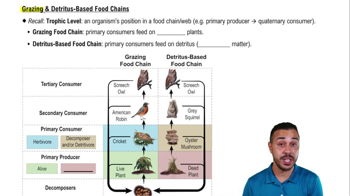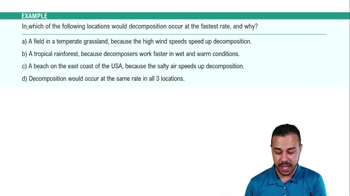Secondary production is the amount of energy converted to new biomass by heterotrophs. And we're going to be looking at the production efficiency of heterotrophs, which is how much energy is stored in an organism from the food that it eats. Now, energy is stored after excreting a bunch of it as waste and using some for respiration. So this is usually very inefficient. As you can see here, we have an example of secondary production where this frog is going to be ingesting food, it will simulate it, extract the nutrients, and whatnot. Some of that energy is going to be lost due to respiration and some will be wasted as feces. Of course, many of these frogs are just going to die, so there goes that. But a small amount will be added as new biomass, and that is going to represent the production efficiency.
In ecosystems, we're going to want to look at the trophic efficiency, which is how much energy is passed between the trophic levels of the food web. Usually, this is only about 10%. This is highly inefficient. In fact, this can range from about 5 to 20%, but 10% is just a good estimate to work with, and it's a nice round number. Assuming approximately 10% of the energy and biomass in one trophic level gets transferred to the next trophic level, we can construct what's called the pyramid of net production. It's going to show the net production of biomass at each level. You can see the energy transfer in this pyramid. Assuming what the primary producers have, we'll just call that 100%. I'm actually going to switch to red just so it shows up. The primary producers represent 100% right there. That means the primary consumers are only going to get about 10% of the total energy that was stored in the biomass of primary producers. These secondary consumers get only 1% of what was at the bottom of the pyramid because they only get 10% of the rung just below them from the primary consumers. So they're only getting 1% of the base of the pyramid. Likewise, the third level is only going to get 0.1%. This is incredibly inefficient.
We can also sometimes be interested in looking at a biomass pyramid, which is going to show the amount of biomass stored in living tissue at each trophic level. Hopefully, from this energy pyramid you guessed that most of the biomass is going to be concentrated at the bottom of these pyramids and as we move up in trophic levels, it is going to get much, much smaller.
Now with that, let's go ahead and flip the page.





